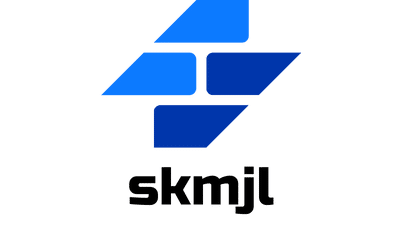In the constantly evolving world of education, the utilization of technology plays a significant role in shaping the learning landscape. One of the most exciting advancements in educational technology is unquestionably adaptive learning. Equally, the space of language acquisition has seen a major dynamic shift, particularly with the inclusion of mobile technology. Let’s delve deeper into this topic and understand how adaptive learning, when combined with language acquisition has been revolutionizing the educational ecosystem.
The Rise of Adaptive Learning in Language Education
The advent of adaptive learning has fundamentally transformed the landscape of language education. This technology-based learning approach allows for a more personalized learning environment, adapting to each student’s learning pace and style.
Also to read : How Is AI Being Used to Predict Equipment Failure in Manufacturing Plants?
As we know, learning a new language can be quite challenging. It involves understanding different grammar rules, expanding vocabulary, practicing pronunciation, and becoming familiar with cultural contexts. Now, adaptive learning technology has the power to transform these challenges into opportunities for the learners.
Adaptive learning tools can adjust the content according to the learner’s ability. For instance, if a student is struggling with a certain grammar rule, the system can present additional practice questions or explanations about that specific rule until the student understands it. On the other hand, if a student finds a particular topic easy, the system may choose to present more challenging content in that area. This way, the learning process becomes truly personalized and learner-centric.
Have you seen this : Can Virtual Training Simulators Improve Surgical Precision in Hospitals?
Leveraging Mobile Devices for Language Learning
The incorporation of mobile devices in education has opened up a whole new avenue for language learners. With the world becoming more digitally inclined, learners are seeking ways to learn a new language anytime, anywhere. Mobile technology has made this possible by providing accessibility to language learning tools at the tip of our fingers.
Mobile apps such as Duolingo, Babbel, or Rosetta Stone are perfect examples of how mobile technology is being used for language acquisition. These apps use adaptive learning algorithms to personalize the learning experience, making it more engaging and effective.
The use of mobile devices for learning a new language also provides students with interactive content. This includes quizzes, games, and flashcards, which aid in the retention of language learning. Moreover, these apps provide instant feedback, enabling learners to track their progress and work on areas where they need improvement.
The Role of Data in Personalized Language Learning
Data plays a crucial role in creating a personalized learning environment. Adaptive learning systems rely on data to adjust the content based on the learner’s needs. This data is collected from the learner’s interactions with the system, such as their response times, correct and incorrect answers, and the topics they struggle with.
For example, language learning apps often employ data analytics to provide learners with a personalized learning experience. The system collects data on the learner’s performance, identifies patterns in their learning behavior, and uses this information to tailor the content.
In addition to this, data also helps in assessing the effectiveness of the learning tools. By analyzing the data, educators can identify the strengths and weaknesses of the learning system and make necessary improvements. Therefore, data not only enhances the learning experience for students but also aids in the constant improvement of the educational tools.
The Future of Language Learning: Google Scholar and CrossRef
The future of language learning is likely to be driven by advancements in technology and research. Google Scholar and CrossRef are two platforms that have made significant contributions to this field.
Google Scholar is a widely used web search engine that indexes scholarly literature. It provides access to a broad range of research articles, conference papers, theses, books, and other scholarly literature. The use of Google Scholar in language learning can provide learners with a wealth of resources to further their understanding of the language they are learning.
On the other hand, CrossRef is a digital citation linking service. It allows researchers and scholars to access references cited in academic papers. When used in language learning, CrossRef can help learners delve deeper into language studies by enabling them to access academic literature related to their language of interest.
Both Google Scholar and CrossRef are powerful tools that have the potential to significantly advance language learning. They provide learners with a wealth of resources to deepen their understanding and enhance their language acquisition skills.
The field of adaptive learning in language acquisition on mobile devices is undoubtedly exciting. With continuous research and development, we are likely to witness even more advanced and effective tools for language learning in the coming years.
The Impact of Artificial Intelligence on Adaptive Language Learning
Artificial intelligence is not a new concept in educational technology, but its application in adaptive learning and language acquisition has been a game-changer. Utilizing artificial intelligence in language learning can significantly enhance the learning experience, making it more efficient and engaging.
Understanding the nuances of a foreign language can be a daunting task for learners. It requires the ability to grasp the grammatical structures, comprehend the vocabulary, and master pronunciation. With the incorporation of artificial intelligence, adaptive learning platforms can now address these complexities in a personalized manner.
Artificial intelligence enables the learning platform to understand the learner’s abilities, strengths, and weaknesses. It can identify patterns in the learning behavior, such as which topics the learner finds challenging or the areas where they excel. The platform then uses this information to tailor the content, providing a truly personalized learning experience.
For instance, if a student struggles with understanding English tense structures, the AI-powered platform can identify this and provide tailored exercises and explanations to strengthen this area. Similarly, if a learner is proficient in Spanish vocabulary but struggles with pronunciation, the platform can offer specific pronunciation lessons to improve their speaking skills.
Moreover, the application of artificial intelligence in adaptive language learning is not limited to content personalization. AI can also provide instantaneous feedback, correcting pronunciation errors, and grammar mistakes on the spot. This immediate feedback can greatly enhance the learner’s understanding and retention of the language.
The Integration of Adaptive Learning and Mobile Learning in Language Education
The integration of adaptive learning and mobile learning has brought a significant shift in the language education landscape. Mobile learning, or m-learning, refers to learning through mobile devices such as smartphones, tablets, or other handheld devices. It has the advantage of allowing learners to access educational content anytime, anywhere.
When combined with adaptive learning technology, mobile learning can provide a highly personalized and flexible learning environment. Mobile devices become more than just tools for accessing content; they become interactive learning platforms that adapt to the learner’s style and pace.
Several language learning apps employ this integrated approach, using adaptive learning algorithms to tailor the content to each learner. The learner can practice a new language at their own pace, focusing on areas they find challenging and accelerating through the topics they find easy. This creates a learner-centric environment, significantly enhancing the learning experience.
The integration of these two technologies also brings additional benefits like interactive content, instant feedback, and progress tracking. For instance, learners can engage with quizzes, games, flashcards, and other interactive content that aid in language retention. They can receive immediate feedback on their performance, helping them identify areas for improvement. Moreover, learners can track their progress over time, keeping them motivated and engaged in their language learning journey.
Conclusion: The Promising Future of Adaptive Learning for Language Acquisition on Mobile Devices
The field of language learning has been significantly transformed by advancements like adaptive learning and mobile technology. These technologies have made learning more personalized, engaging and accessible, catering to diverse learning styles and needs.
Platforms like Google Scholar and CrossRef have brought an additional layer of depth and authenticity to language learning by providing access to a wealth of academic and research resources. These platforms, coupled with artificial intelligence, have the potential to further revolutionize the learning environment by making it even more tailored and effective.
As we continue to witness advancements in educational technology, we can expect even more innovative tools and platforms to emerge. These will not only create a more impactful and effective learning environment but also democratize access to education, making language learning a truly global and inclusive endeavor.
The future of adaptive learning in language acquisition on mobile devices is indeed promising. With continuous research and development, the language learning experience will become more learner-centric, robust, and enjoyable. It’s an exciting time for language learners, educators, and technologists alike, as we collectively shape the future of education.






